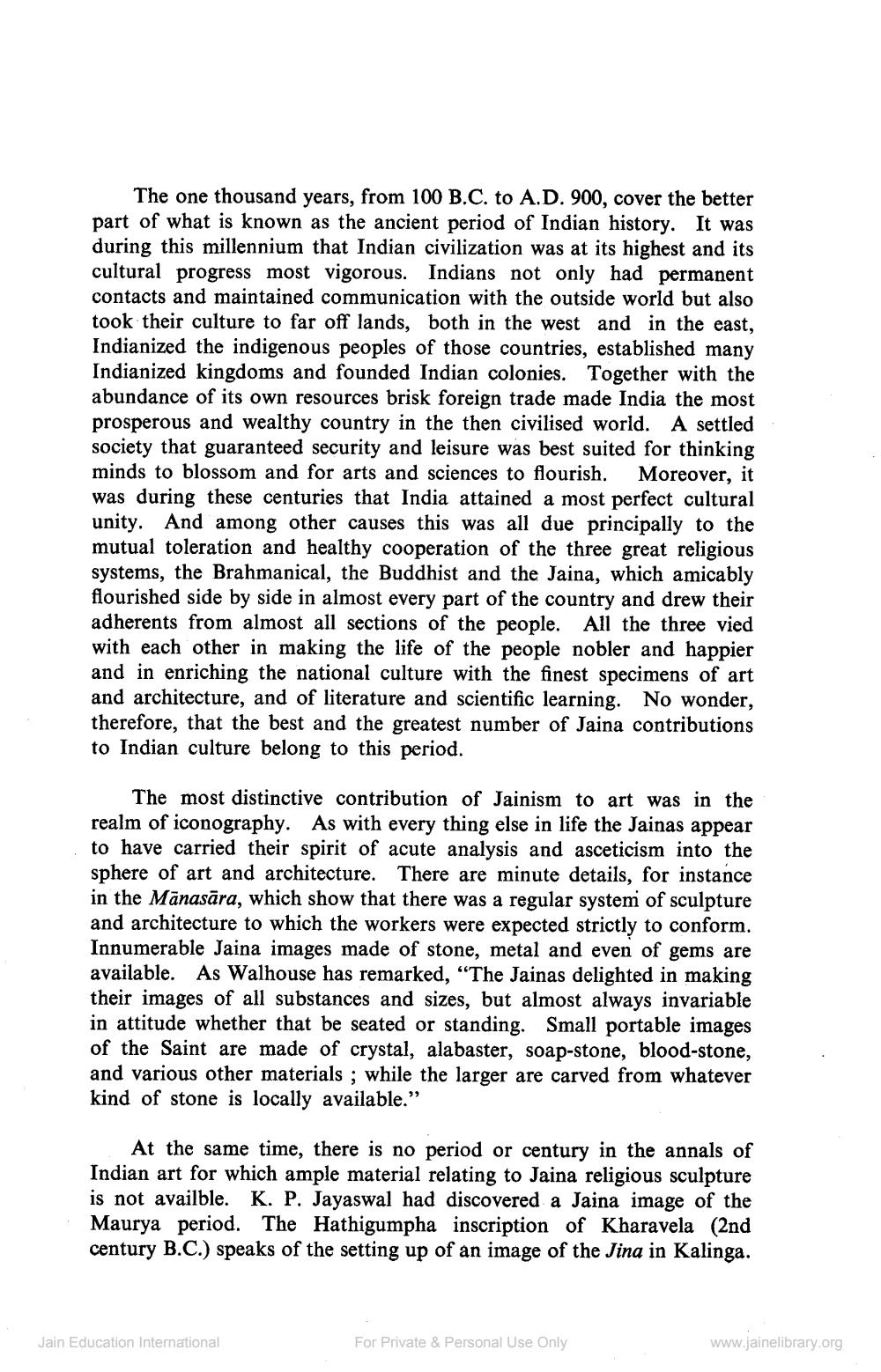________________
The one thousand years, from 100 B.C. to A.D. 900, cover the better part of what is known as the ancient period of Indian history. It was during this millennium that Indian civilization was at its highest and its cultural progress most vigorous. Indians not only had permanent contacts and maintained communication with the outside world but also took their culture to far off lands, both in the west and in the east, Indianized the indigenous peoples of those countries, established many Indianized kingdoms and founded Indian colonies. Together with the abundance of its own resources brisk foreign trade made India the most prosperous and wealthy country in the then civilised world. A settled society that guaranteed security and leisure was best suited for thinking minds to blossom and for arts and sciences to flourish. Moreover, it was during these centuries that India attained a most perfect cultural unity. And among other causes this was all due principally to the mutual toleration and healthy cooperation of the three great religious systems, the Brahmanical, the Buddhist and the Jaina, which amicably flourished side by side in almost every part of the country and drew their adherents from almost all sections of the people. All the three vied with each other in making the life of the people nobler and happier and in enriching the national culture with the finest specimens of art and architecture, and of literature and scientific learning. No wonder, therefore, that the best and the greatest number of Jaina contributions to Indian culture belong to this period.
The most distinctive contribution of Jainism to art was in the realm of iconography. As with every thing else in life the Jainas appear to have carried their spirit of acute analysis and asceticism into the sphere of art and architecture. There are minute details, for instance in the Mānasāra, which show that there was a regular system of sculpture and architecture to which the workers were expected strictly to conform. Innumerable Jaina images made of stone, metal and even of gems are available. As Walhouse has remarked, "The Jainas delighted in making their images of all substances and sizes, but almost always invariable in attitude whether that be seated or standing. Small portable images of the Saint are made of crystal, alabaster, soap-stone, blood-stone, and various other materials ; while the larger are carved from whatever kind of stone is locally available.”
At the same time, there is no period or century in the annals of Indian art for which ample material relating to Jaina religious sculpture is not availble. K. P. Jayaswal had discovered a Jaina image of the Maurya period. The Hathigumpha inscription of Kharavela (2nd century B.C.) speaks of the setting up of an image of the Jina in Kalinga.
Jain Education International
For Private & Personal Use Only
www.jainelibrary.org




